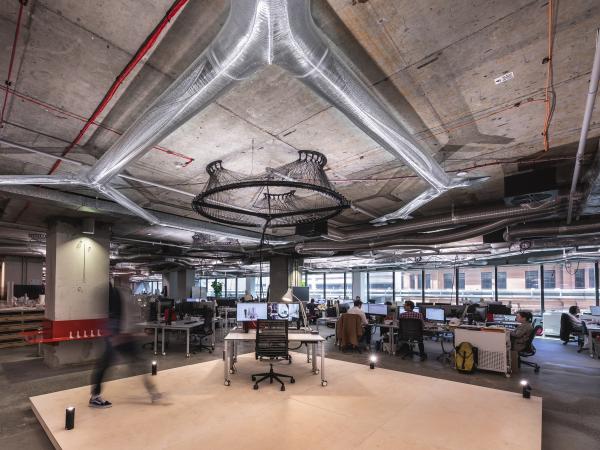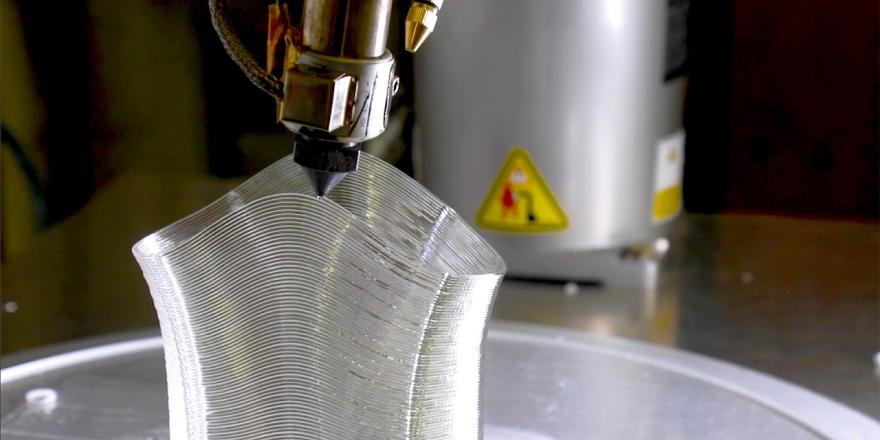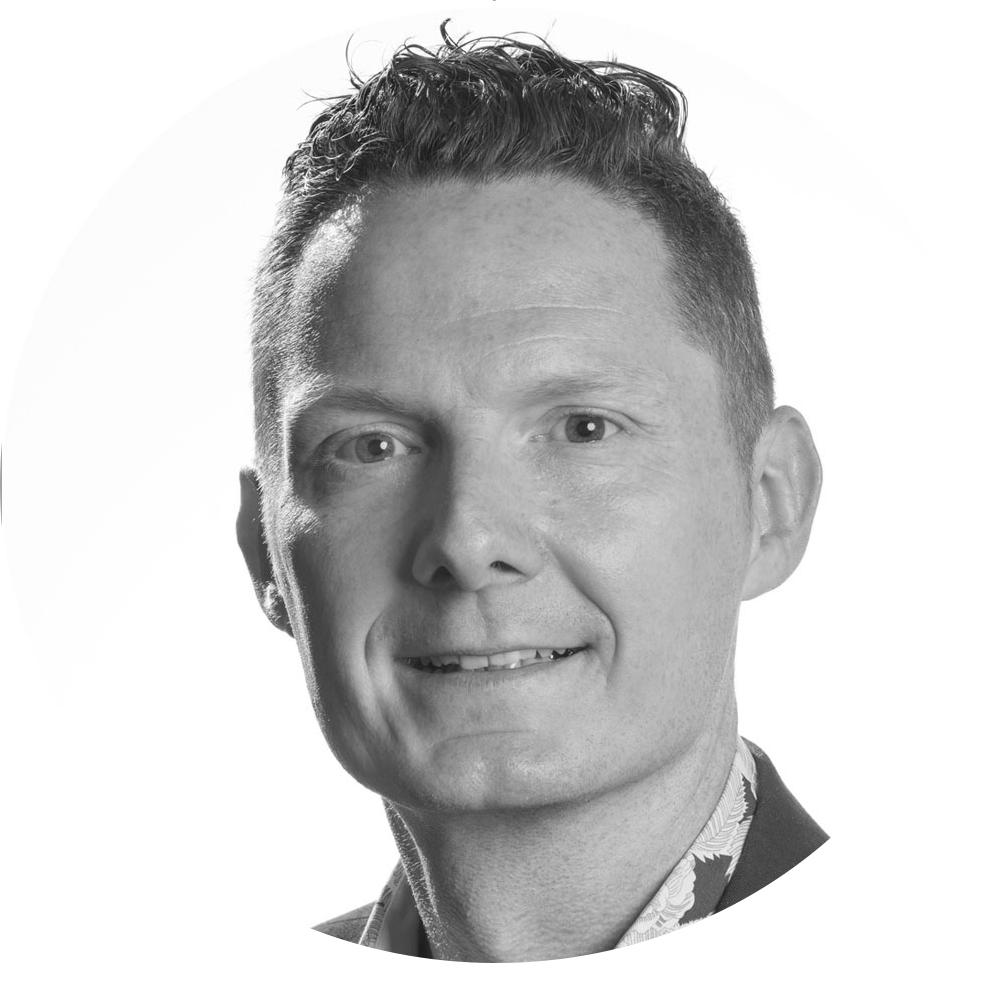The world's first robotically 3D-printed air-diffusion system, offering potential to cut carbon emissions and resource use in the building industry.
Project summary
The construction industry contributes around 40% of global carbon emissions. As a society, we are facing significant challenges and cannot continue building the way we do now. A far-reaching transformation of current practice is required, including new approaches to design, materials and construction.
A collaborative industry partnership at UTS is developing new ways to help, creating the world's first 3D printed air diffusion system, called 'Systems Reef 2 (SR2)' - SR2: towards zero carbon and zero waste.
In Australia, 98% of all buildings are existing. Retrofitting these existing buildings is critical to mitigating climate change. The radical new SR2 system allows new air diffusion systems to be re-refitted to existing buildings, lowering their carbon footprint.
In Australia, 98% of all buildings are existing. Retrofitting these existing buildings is critical to mitigating climate change
Designed for circularity and disassembly, the robotically 3D printed system uses recycled plastic waste. Switching to recycled plastics and designing out redundancy reduces the carbon footprint of SR2 by 90% compared to traditional steel ducting.
Furthermore, at end-of-life, each component can be shredded and reused, creating new material to be 3D printed again into new components.
Designed to 'breathe'
Inspired by nature and enabled by advanced manufacturing, SR2 is designed to branch and breathe like a natural organism, creating new opportunities for comfort and expression within buildings.
Shaped for air, the system's aerodynamic form reduces friction, leakage and energy consumption, helping reduce the size of each component. Thousands of tiny pores on the surface allow the system to 'breathe' through its skin, diffusing air into the space. Through its plug and connect system, building owners and tenants can easily adapt and reconfigure the layout to suit their changing needs.
SR2 is a collaborative research project between BVN Architects and the Transformative Technologies Group in the School of Architecture at UTS. The partnership demonstrates the transformative power of low-carbon materials and advanced manufacturing and real-world impact of architectural practice that goes beyond traditional boundaries to address some of our most pressing environmental and societal challenges.
For more information, visit the SR2 project website and read our news article on 3D printed air.
Project timeframe
2019 – 2021
SDG targets addressed by this project
Industry, Innovation and Infrastructure:
9.1 - Develop quality, reliable, sustainable and resilient infrastructure, including regional and transborder infrastructure, to support economic development and human well-being, with a focus on affordable and equitable access for all.
9.4 - By 2030, upgrade infrastructure and retrofit industries to make them sustainable, with increased resource-use efficiency and greater adoption of clean and environmentally sound technologies and industrial processes, with all countries taking action in accordance with their respective capabilities.
Sustainable cities and communities:
11.6 - By 2030, reduce the adverse per capita environmental impact of cities, including by paying special attention to air quality and municipal and other waste management.
Responsible consumption and production:
12.5 - By 2030, substantially reduce waste generation through prevention, reduction, recycling and reuse.
Key collaborators
Project team
- Assoc. Prof Tim Schork
- David Pigram
- Michael Bennett
- Tran Dang
- Gwyn Jones
- Mohammed Makki
- Richard Musgrove
Funder
- Ninotschka Titchkosky
- Chris Bickerton
- Mitch Page
- Lulu Cipriani
- Phil Spedding
- Emily Morosin
- Felix Saw
- Nikita Notowidigdo
Industry partners
- Enrico Zara
- Steve Drane
- Camilo Chalela
- Chris Macdonald
- Mairead Hogan
- Nawreen Sultana
- Sihui Wang
- Dr. Caroline Noller
- Erin Gonthier
- Barry Dineen
- Dominic Hawton
- Shanny Lam
- Mateusz Sum
Industry contributors
Aidan Kavanagh
Equilibrium Air Conditioning + Climatech
Patrick Ibrahim
Michael Morley
Matthew Tobin and team
-
Associate Professor, School of Architecture







